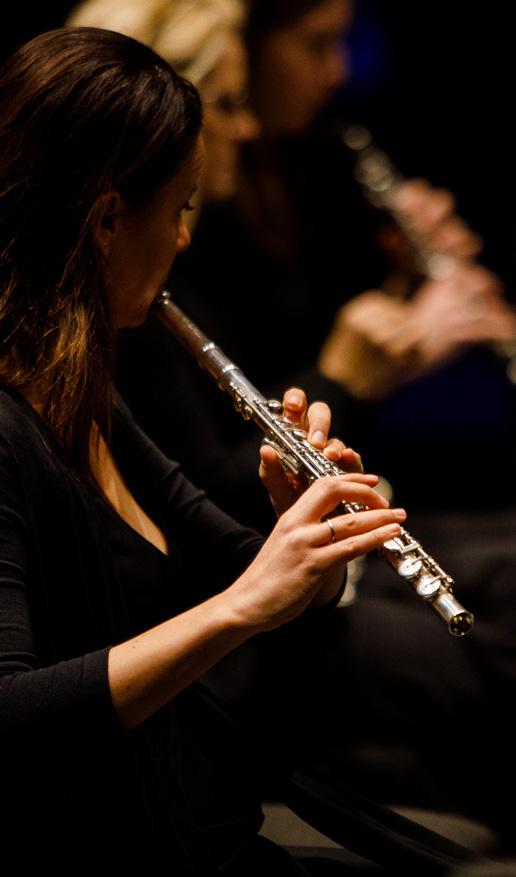
CLASSICAL CONCERT SERIES
2 TheSharon.com ©2024 The Sharon L. Morse Performing Arts Center. ©2024 Significant Productions, Inc. 500
Theatre Staff ......................................................................................................... 2 Whitney Morse on The Sharon® L. Morse Performing Arts Center ....................... 3 Program .......................................................................................................... 5-10 Maestro Note ..................................................................................................... 11 Maestro ......................................................................................................... 12-13 Featured Artists .................................................................................................. 14 Orchestra Roster ................................................................................................ 15 VPO Donors ................................................................................................. 16-17 Business Partners ................................................................................................ 18 Coming Soon ................................................................................................ 19-21 All shows produced by SignificantProductions.org Significant Production, Inc. is a nonprofit production company that operates The Sharon L. Morse Performing Arts Center and The Studio Theatre Tierra del Sol in The Villages. Executive Director ......................................................................... Jason Goedken Artistic Director ............................................................................ Whitney Morse Associate Artistic Director ................................................................. Angel Creeks Director of Operations ......................................................................... Jon Cronin Production Manager ....................................................................... Mike Giovinco Booking Manager ................................................................................ Sierra Weiss Marketing Director ......................................................................... Taylor Adkins Senior Business Manager .................................................................. Sean Graham Lighting Supervisor ........................................................................ Ally Southgate Associate Lighting Supervisor ..........................................................Dio Raquel Jr. Senior Production Coordinator ............................................................. Madi Carr Audio Visual Director .......................................................................... Luke Bezio House Manager .................................................................................... Alec Speers Assistant House Managers .........................Mark Kirschenbaum, Nichole Pollack Director of Ticketing & Customer Relations .............................. Yasmeen Stogden Ad Sales ........................................................................................... Taylor Adkins marketing@significantproductions.org
CONTENTS THEATRE STAFF

Dear Patron of the Arts,
Welcome to The Sharon® L. Morse Performing Arts Center!
Much like the building’s namesake, my grandmother, Sharon L. Morse, we love all varieties of the performing arts here. It is in her memory that I, along with my amazing team of artists and arts administrators, strive to bring many different types of the highest quality entertainment here to The Sharon.
Since opening in 2015, we have strived to establish your trust, that a show at The Sharon is a show worth seeing. Perhaps you find yourself here today to see a concert of one of your favorite musicians, or to take in the national tour of a Broadway show. Either way, we encourage you to consider trying out a new show that perhaps you haven’t heard of before, knowing that it has been intentionally curated by our team.
We welcome you to The Sharon: a place for you to see an old favorite, but also a place to discover your new favorite. I sincerely hope you enjoy the show today, and I look forward to seeing you here again soon!
See You at The Sharon,
Whitney Morse Artistic Director
3 352-751-7799
MORSE
PERFORMING ARTS CENTER WHITNEY
on The Sharon®L. Morse
23/24 SEASON
SEP 3-MAY 6

One Show Left!
Monday, May 6 .................. Opera Gala Magical Moments of Opera Scenes
SEP 1-MAY 10 24/25 SEASON
ON SALE NOW // SUBSCRIPTION RENEWALS WITH NO CHANGES
APRIL 10 // SUBSCRIPTION RENEWALS WITH CHANGES
MAY 1 // NEW SUBSCRIPTIONS ON SALE
CHOOSE AT LEAST 4 SHOWS & GET 10% OFF
GET ALL 9 SHOWS & GET 15% OFF
Sunday, September 1 ................................ Labor Day Celebration Pops
Tuesday, October 15 ................................ American Italian Celebration
Tuesday, November 19 ............................................................... Messiah
Tuesday, December 17 ........................................... Holiday Celebration
Wednesday, December 18 ..................................... Holiday Celebration
Sunday, January 26 .......................................... Classical Concert Series
Friday, February 14 .................... American Music: Celebration of Love
Sunday, March 9 ................................................ Classical Concert Series
Tuesday, April 8 .................................................. Classical Concert Series
Saturday, May 10 ..... Opera Gala: Magical Moments of Opera Scenes
Nicola Colabianchi
Il Prete Rosso (Red Priest)
L. V. Beethoven
Violin concerto in D major Op. 61
Johannes Brahms
Symphony N.3 in F Major Op. 90
Nicola Colabianchi
Il Prete Rosso (Red Priest)
Composing music, painting, writing in someone’s style, “a la mannere de”, is something that has always fascinated artists. It is obviously a tribute to the authors imitated as well as representing an extraordinary training ground in which to hone technical and analytical skills.
Making such “artist fakes” can therefore be considered a kind of parlor game.
Composers such as Schumann, Tschaikovsky, Ravel, Casella and others have already created “contrafacta”, i.e. compositions in the style of some famous author.
Red Priest (this is how Vivaldi, who had been ordained a priest and had red hair, was nicknamed) is an example of this practice: it is, in fact, a composition in the style of the very famous concerts called the “4 seasons”.
In the music of “Red Priest” all the stylistic features of Vivaldi’s language are found, in the configuration of the themes, in the type of writing for the strings, in the harmonic progressions, in the form of the violin concerto. We can therefore define this “Red Priest” as a real “fifth season”!
L. V. Beethoven
Concerto for Violin and Orchestra in D major Op.61
The Concerto in D major, Opus 61 is the composer’s main composition for violin and orchestra, dating back to the end of 1806 and therefore contemporary with the Fourth Symphony, the three Quartets of Opus 59, and the Fourth Piano Concerto. The Concerto was probably composed to fulfill the request of a prestigious soloist, the violinist Franz Clement (twenty-six years old at the time of the composition, as well as director of the Theater an der Wien), who had, among other things, conducted the first performance of the Third Symphony and the revival of Fidelio.
5 352-751-7799
PROGRAM
According to the testimony of Carl Czerny (Pianoforte-Schule op. 500), a pupil and friend of the master, Beethoven would have written the score in a very short period - as the rather messy and incomplete state of the autograph seems to confirm - and would have finished just two days before the first performance. This took place in Vienna, at the Theater an der Wien, on December 23rd,1806. Franz Clement achieved personal success, to which an extraordinary “number” was certainly not unrelated, consisting in the performance, between the first two movements of the Concerto of one of his violin sonatas, played on a single string and held, moreover, upside down.
However - despite Carl Czerny’s different testimony - the reviews of the time were harsh towards the composition. The Zeitung für Theater on January 8th, 1807 wrote: “It is a unanimous opinion among connoisseurs that “ the Concerto “ does not lack beauties, but that overall it appears completely fragmentary and that the infinite repetitions of banal passages can easily generate monotony”. Regardless of the opinion of a single critic, the score met with very little success among audiences and performers in the following decades; subsequent attempts to impose the composition in the repertoire (by Tomasini, in Berlin in 1812; Baillot, in Paris in 1828, Vieuxtemps, in Vienna; Uhlrich, in Leipzig in 1836) remained essentially without effect; until, in 1844, the thirteen-year-old Johann Joachim performed it for the first time in London under the direction of Mendelssohn, starting a triumphal rediscovery.
The main cause of this misrecognition must be found mainly in the fact that Concerto Opera 61 is an unfashionable composition. The affirmation of the Biedermeier taste among the “new” bourgeois public had favored the diffusion of a type of concert in which the purely musical content and the role of the orchestra were reduced to a minimum and the interest was concentrated solely on the performance of the “bravura” qualities of the virtuoso. Beethoven himself, to encourage the uncertain editorial diffusion of the Concerto, personally edited a piano version, equipped with four sensational authentic cadences and characterized by a brilliant, virtuosic, and almost noisy style. The proposal for a “double version” (violin and piano) of the score had come in 1807 from the composer Muzio Clementi, who, in the role of publisher, had promoted the second printed edition of the Concerto, in London in 1810 (but not by chance even the first edition, published in Vienna in August 1808 by the Bureau d’Arts et d’Industrie, had the same “double” destination).
The Concerto Opera 61, on the other hand, is a work alien by its nature to eccentric extroversions. The solo writing, first of all, shows a decisive orientation towards a smooth and elegant phrasing which, although requiring a high technical challenge, allows little for pure virtuosity; in short, it tends more to expressively involve the listener than to amaze him. Even the fundamental “problem” posed by the concert genre, i.e. the relationship between the soloist and the orchestra, is resolved by Beethoven in a rather dissimilar way compared
6 TheSharon.com
PROGRAM
to the Piano Concertos; in fact, it is not a conflictual relationship, which seems the soloist acting as a clear antagonist towards the orchestra. The violin, on the other hand, while maintaining a strong individual profile, establishes an intimate complicity with the orchestra, which derives from the mellow tonal choices of the instrumental, the absence of marked dynamic contrasts, from the concertante emphasis of the wind instruments (noticeable especially when the strings are, as at the time, in a reduced formation).
The formal organization of the Concerto follows the main lines of the author’s interests in the early years of the century, dividing itself (like the Sonatas operas 53 and 57, the Fourth and Fifth Piano Concertos) into two large blocks, the first established by a movement in sonata form, the second from a short contemplative movement which has an introductory function concerning the Finale (generally a Rondo). However, the musical content of the score distances itself from those characteristics that have caused rivers of ink to be spilled on the “heroic” and “titanic” Beethoven. The essential elements of this image are missing from work 61: the pronounced thematic dialectic and the elaboration of developments.
The Allegro ma non-tanto which opens the Concerto is based on two main thematic ideas that are similar to each other: the first with a descending profile, the second ascending, but both in joint degrees, with regular values, introduced and supported by insistent rhythm of four “hits” (the timpani only for the first idea, the violins alone for the second); and both present, in the orchestral introduction, by the woodwind group. Precisely in the introduction all or almost all the thematic elements that will give life to the movement appear; extremely short, compared to the vast dimensions of this, is the development section, and the entire tempo is based on the elegant, varied repetition of the basic material by the soloist and the orchestra. The cadenza generally performed, by tradition, is by Fritz Kreisler (as is that of the final movement).
The second movement consists of a theme with variations, which however does not give rise to imaginative expressive transformations and takes place entirely in a coherent setting; however, the movement has an eccentric structure, inspired by the principle of the “double variation” typical of certain Haydn Adagios. Expounded by the strings, the theme is varied three times with precious ornaments by the soloist, who then presents a second theme, also varied after a fourth variation of the first theme. After the final appearance of this, energetic string chords and a punchy violin cadence lead directly into the Finale. It is a Rondo that constitutes the most openly brilliant page of the score; the structure is the usual A-B-A-C-A-B’-A, which alternates a refrain with different episodes. To moderate the brilliant character of the movement there is a peculiar stylistic element: the “pastoral” one, highlighted by the time of 6/8, by the particular, lovely melodic turning of the refrain, by the entry of the horns on the second theme, by the relief of the woodwinds. Even the soloist’s line, among the trills, the scales, the arpeggios, and the double strings that engage the virtuoso, does not betray his
7 352-751-7799 PROGRAM
PROGRAM
vocation towards a lyrical and sublimated expressiveness, far from the cold and elegant decorations of the rococo concert as from the easy effects of Biedermeier taste.
Johannes Brahms
Symphony N.3 in F major Op. 90
In 1883, the year in which he composed the Third Symphony, Brahms was at the height of his fame and creative maturity: Wagner passed away in February of that same year, and he is unanimously considered the greatest living German musician. On his side are not only long-standing admirers, such as the wide circle of Clara Schumann and that of Hans Richter, Joseph Joachim, and so on but also unsuspected neophytes such as Hans von Bülow, who in 1879 wrote to a friend, Countess von Char, that «after Bach and Beethoven he is the most eminent, the greatest of composers. Even the silly dispute with Anton Bruckner, his Viennese neighbor, fomented by adverse parties rather than by the will of the composers, has calmed down: the world finally seems to smile at Brahms, to soften the proverbial skittishness of his character. The first performance of the Third Symphony, which took place in Vienna on December 2nd, 1883 with the Philharmonics conducted by Hans Richter, was a triumph, a consecration that amazed the author himself, who had always been wary of incense-scented hosanna choirs. For him, the Third had only one flaw: that of having immediately become “unfortunately too famous”. The phrase is typical of his irony; this time, however, not grumpy but permeated with an intimate, conscious satisfaction.
The fruit of Brahms who was so happy with himself that he hummed the themes of the work - including that three-note motif, in the street during his daily walks in Wiesbaden, where the Symphony was born between the summer and autumn of ‘83. F-A flat-F, which opens by repeating according to the German alphabetical nomenclature (F-a-F) the initials of the youthful motto “Frei Aber Froh”, free but happy - the Third appeared more mature and organic than in the previous rehearsals. Bypassing a preciously anomalous moment such as the Second, Brahms with it seemed to have returned to the intentions that had determined the physiognomy of the First, hailed by Hans von Bülow as “Beethoven’s tenth”; however, re-merging what there might have been experimental and constructively demonstrative in that one into a superior, more personal formal and stylistic synthesis. Even outward respect for classical schemes was combined with ease and absolute confidence in the symphonic manipulation of thematic materials in all their potential. This gave full logic to the co-presence in the traditional structures of heterogeneous elements derived from the lieder heritage as well as from the Protestant chorale: coherently attested in a development that was no less tense and consequential for being frequently oscillating between surges and stagnations, to confer organicity and mutual correspondence to all the subtle affective vibrations
8 TheSharon.com
gradually proposed by an expressive itinerary which here, more perhaps than in any other of Brahms’ four symphonies, becomes a highly sensitive seismograph of musical perception, an intimate diary of a thousand impalpably nuanced experiences.
Although it is difficult to reduce such a composite work to a single expressive instance from the point of view of the stylistic and emotional features harmoniously and organically coexisting in it, the Third Symphony is configured as a musical creation imbued with tragic fatalism, pathos, and heroism sublimated in the categories of absolute music: a melting pot where the most diverse expressive needs merge, in continuous and balanced but restless evolution, each gradually symbolized by different thematic proposals, and above all by the different rhythmic, harmonic and timbrical connotations conferred during the composition to those thematic proposals. The imposing, dramatic opening measures of the first movement, Allegro con brio, explosively initiate the exposition of a codicil material, as always in Brahms, which is extraordinarily dense and nourished, structured in such a way as to profoundly but not univocally influence the entire course of the movement. The second main theme differs, as tender and lulling as the first is passionate in its powerful swaying: but the relationship between the two motifs is maintained more in terms of analogy than contrast thanks to the presence of numerous secondary proposals, all connected to both themes by intimate structural relationships, and which tend to highlight the common sides more than the elements of diversity. In this way the entire intense compositional fabric of the first half proceeds, tight and compact until the reappearance, after many suspended returns, of the initial phrase in the closing, with calmed accents that take on a soothing character and role.
In the Andante that follows, Brahms initially seems to move towards tones of contained psychological participation, with the elegant lyricism of an entirely Nordic theme, with melancholy popular movements. But this motif subsequently encounters subtle expressive modifications, hand in hand with the formal manipulations determined by careful and in-depth use of variation, once again recomposing a particularly rich and complex emotional horizon. The role of expressive and psychological epicenter, traditionally assigned, in the grand form, to the slow tempo, is here extended into the third movement which, while respecting the formal architecture of the Scherzo, establishes a partnership with the Andante in creating a block of two movements dedicated to lyrical-elegiac reflection, and even surpasses it in this direction. The theme that opens the Poco allegretto, in C minor, sung by the cellos in mezzo voice, is an unrivaled gem of Brahms’ melodic invention, yet fertile in unpredictable developments. Particularly unexpected is the central episode of the “Trio”, which interrupts the nostalgic and meditative pace of this third movement with a stylized dance movement that even presages Mahler. The return of the main section delimits the perfect and harmonious construction of this movement, even more expressively generous the more its lyrical intensity
9 352-751-7799 PROGRAM
is hidden behind elegant and concise forms, shaded almost modestly by the imperceptibly varied use of timbre.
Epic aspirations seem to return at the start of the Finale, Allegro: from the nervous curves of the first theme to the subdued chorale that follows it closely, to the expansive castability of the third idea, in a short space of time a very dense codicil material is proposed, which gives life to incessant developments, in the pressing of ideas, variations, transformations, and plots. A becoming that often becomes harsh, dramatic, and increasingly aimed at a monumental constructive need capable of governing the course of musical events according to new compositional elaborations. The resolution of contrasts which in the classical sonata form is the main purpose of the conclusion is replaced here almost by concluding a long dialogue with several voices, to finally suspend it in absorbed contemplation: of which the return of the initial theme of the first movement is a symbol, in the very delicate and at the same time solemn fade of the closing.
10 TheSharon.com
PROGRAM
MESSAGE FROM THE MAESTRO
Dear friends and supporters of The Villages Philharmonic,
The next two concerts conclude the 2023/2024 season. This evening’s program includes three very beautiful and intense pieces, the concert opens with a world premiere of a composition by the composer Nicola Colabianchi.
In the program, the composer highlights the expressive moments of his piece; “The Red Priest”.
The return of a very talented violinist Fabrizio Falasca who will perform the concert for violin and orchestra in D major by the great composer L. V. Beethoven. Brahms’ Third Symphony will conclude the evening.
The concert on May 6th will be dedicated to the magical moments of the most famous opera scenes and will be a succession of arias, romances, and overtures by famous composers such as Mozart - Rossini - and Verdi by extraordinary performers.
Thank you for the support you give to art and your orchestra.
Musically yours,
Pasquale Valerio, Music Director and Founder
11 352-751-7799
MAESTRO

PASQUALE VALERIO, MAESTRO
Pasquale Valerio is an internationally acclaimed Orchestral Conductor. In 2004 he founded The Villages Philharmonic Orchestra, became its musical director, and is still engaged in concerts and tours throughout Florida and worldwide.
Maestro Valerio was also the founder of the Lake Sumter Chamber Orchestra as well as co-founder and conductor of the Florida Lakes Symphony from 2005 to 2006.
He collaborates with various European orchestras such as the Philharmonic Orchestra ‘900 of the Teatro Regio Opera in Turin, the Philharmonic Orchestra of Prague, the Virtuosi of the Accademia di Santa Cecilia, the Virtuosi of the Philharmonic of Bacau, the “A. Scarlatti” Symphony Orchestra of Naples, Orchestra Accademia Nazionale di Santa Cecilia.
In 2006 had the opportunity to assist Sir Antonio Pappano, current Music Director of the Royal Opera House in London This collaboration represented a great point of reference for maestro Valerio and indelibly marked his experience of conducting growth. From 2007 to 2009 he collaborated with the internationally known Viotti music festival in Vercelli, Italy and in May 2018 he began an ongoing cooperation with the North California Music Festival as guest conductor. Pasquale Valerio was born in Naples to a family linked to cultural traditions and founding religious values. The great passion for music was evident from the first years of his life, but, only towards the tenth year of age did he begin his musical studies, first with the piano, and subsequently, at the age of thirteen years, when he began studying trumpet. It is in this period that Pasquale met Maestro Filippo Veniero, an important musical guide for subsequent studies. He studied trumpet at the school of Maestro Francesco Lentini, Bari Conservatory, with whom he obtained the middle completion and, subsequently under the guidance of Maestro Diego Benedusi, he obtained the superior completion of trumpet.
After completing his trumpet studies, he collaborated as an instrumentalist with orchestras of major opera and symphonic institutions including the Opera House “Teatro di San Carlo in Naples “and with other major opera orchestras and symphonic institutions. Simultaneously he studied Composition and Score Reading at the School of Maestro Filippo Veniero.
The meeting with two conductors, J Withney and Gunther Smidth (United States) conditioned the musical journey and made it possible that in 1998 Pasquale resumed his studies started in Naples with F. Veniero. Also important was the meeting with the famous conductor Anton Coppola in 1999, who became Pasquale’s mentor and guide.
12 TheSharon.com
Pasquale is a guest collaborator at festivals and international competitions, including:
International Piano Competition “F. Schubert” in San Cristoforo Virtuosi of the Bacau Philharmonic, Romania, Viotti Music Festival, Camerata Ducale, Italy, Piano Festival of Carrara/Arezzo
Orchestra 900’ of the Teatro Regio of Turin, Oída Symphony Orchestra (Arezzo) Philharmonic Orchestra of Benevento, New Orchestra Scarlatti and Florida Philharmonia
In the academic year 2023 he was appointed Visiting Professor of Conducting Studies at the “London Performing Arts Academy” and at the end of 2023, appointed Honor Roll of “ALTAMURA MERCADANTE FEST”.
13 352-751-7799
MAESTRO
FEATURED ARTISTS
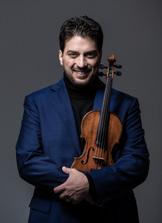
FABRIZIO FALASCA
Fabrizio Falasca is considered among the leading Italian violinists of his generation. He regularly performs as soloist in the most prestigious theaters and festivals throughout the world, such as the Royal Festival Hall in London, Brahms Saal of the Musikverein in Vienna, Salle Garnier in Montecarlo, Teatro Carlo Felice in Genova and the Teatro San Carlo in Napoli, to name a few. He is in demand as a guest concertmaster with world class orchestras including the Philharmonia of London, Orchestre de la Suisse Romande, BBC Philharmonic Orchestra, Royal Liverpool Philharmonic Orchestra, and regularly leads the Teatro Lirico di Cagliari Orchestra, Maggio Musicale Fiorentino Orchestra, Teatro dell’Opera Orchestra in Rome, Petruzzelli Orchestra in Bari. In 2016, he won the Concertmaster position of the Tyroler Symphonie Orchester Innsbruck, and in the same year he joined the Philharmonia Orchestra in London as Assistant Leader, position currently held. In 2022 he won the Concertmaster position of the Teatro Lirico of Cagliari Orchestra. He regularly performs chamber music with his string quartet, the Philharmonia Chamber Players, and with musicians such as B. Canino, F. Petracchi, J. Ju, and A. Pompa-Baldi among others. Falasca is often featured on the Italian national broadcasting Radio RAI, as well as on BBC Radio, and is a prolific recording artist for various labels such as Centaur Records, CPO, Aulicus Classics, Amadeus and Brilliant Classics. He is a laureate of the Vittorio Veneto and the Postacchini International Violin Competitions. Fabrizio studied with Salvatore Accardo at the Stauffer Academy, with Felice Cusano at the Fiesole Music School, and Dora Schwarzberg. After his studies in Italy, he was rewarded a scholarship and graduated with Master of Music at the Royal Academy of Music in London under So-Ock Kim. His teachers includes M.Vengerov and L.Kavakos. He is currently violin professor at the Conservatory of Potenza, Italy and at the London Performing Academy of Music. He plays a J.Guarneri 1727 violin and a Francesco Rugeri 1690 violin both gifted by the Barison’s family
14 TheSharon.com
FLUTE
Nicolas Real, Principal
Geraldine Morillo Barazarte
OBOE
Amy Collins, Principal
Chanmi Kim
CLARINET
Jason Gibbs, Principal
Dominique Snider
BASSOON
Chris Eberle, Principal
Scott Radloff
Ashley Geer Hedrick
FRENCH HORN
Benjamin Lieser, Principal
Dann O’Donnell
Nicholas Burner
John Collins
TRUMPET
John De Paola, Principal
Matthew Piper
TROMBONE
Andrea Rowlison, Principal
Jeremy Fielder
BASS TROMBONE
Stewart Undem
TYMPANI
Chris Nolin
FIRST VIOLIN
Laura Hamilton, Concertmaster
Stewart Kitts
Marius Tabacila
Jerry Weiss
Jose Guédez
Mark Lambert
Cindy Qi
Baoling Xu
Elaina Cook
ORCHESTRA ROSTER
SECOND VIOLIN
Gregory Carreño, Principal
Elizabeth Kitts
Israel Mendez
Luisamar Navarro
Isabella Diaz
Natalie Kitts
Yenifer Laurens
Luisa Maria Zambrano
Eduardo Castro
VIOLA
Michael De Jesus, Principal
Juan Carlos Siviero
Rafael Ramirez
Oana Potur
Andrea Oliveira
Francia Laurens
Joshua Cordova
Milica Bunjevac
CELLO
David Calhoun, Principal
Lanny Paykin
Olga Beliaieva
Helen Smith
George Alexander
Benito Liendo
DOUBLE BASS
Kevin Gallagher, Principal
John Di Mura
Jonathan Ingram
Michael Anthony McCabee
15 352-751-7799
VPO DONORS 2023-24 CONCERT SEASON
ORCHESTRA CIRCLE
$10,000+
Dr. Robert & Karen
Chaikin
Margaret M. Dick
Linda Ferens
Maurice & Betsy Joy
Dean & Audrey
Throndsen
MAESTRO CIRCLE
$5,000 – $9,999
Augusto Bernardini
Jeff & Ursula Bergman
Jason Goedken
David & JoAnne Kelch
Diane Kupchak
Peter & Mary Jane Moeller
Mary Thomas
Don & Bonnie Waggoner
SYMPHONY CIRCLE
$2,500 – $4,999
Avrum Abramowitz
Steve & Donna Bell
Bonnie Carnes
Sarah Jordan
CONCERTO CIRCLE
$1,000 – $2,499
Anonymous Donor
John Canner
Dennis R. Carney
David Colvin
Charlotte Conway
Mr. & Mrs. Joseph
DeVuono
Lois Fisch
Charlotte & John Gates
Jeanne Geoffrion Pod
Ralph Gingery
Jay & Lesly Ginsberg
Carol Guglielm
Richard & Estella Hoag
Janet Howell
Diane Kupchak
Doris Martin
George Neal
Mike Whitfield & Darlene
Pruett
Richard & Charlotte
Rahm
Ken & Mary Shutts
Dr. & Mrs. Winfred
Stringer
Abbott & June Webber
Keith & Randee
Workowski
OVERTURE CIRCLE
$500 – $999
Katheryn Batman
Robert Becker
Roger & Julie Cooper
Ruth DiMare
Barbara Dipol
Noel Kott
William & Sharron
Leonhirth
Robert & Sara McPhail
Clint & Michelle
Newman
Paul & Dorian Schnirring
Joan Spires
Kathy Sumner
Dr. Laurie Ullery
Andrea Ziccarelli
SUITE CIRCLE
$100 – $499
Bernie & Elizabeth
Albrecht
Gene Armani
Randall & Gemma
Benjamin
Linda Boese
Doug & Sharon
Bretz
Dora Bryan
Thomas & Linda Casey
Irene Coen
Marie Connolly
Kenny & Elizabeth Constant
Glenda Crandall
James & Karen Donavan
Mary Dzuro
Louise Elwood
Greg & Mary Feichtel
Jack & Nancy Fieldman
Leslie Flanders
Mia Ford
William & Gail FraserGiacchi
Lisa French
Peter Fritz & Carol Mangan
Mary Ann Garback
Alan Geller
16 TheSharon.com
VPO DONORS 2023-24 CONCERT SEASON
Richard & Camille
Gehnrich
Greg & Carolynn Gilbert
Sheldon & Shelley Goldseker
Doris Goodwin
Richard Hall
David & Kathleen
Haviland
Debbie Halye
Richard & Susan Jacobs
Dan & Carol Johns in Honor of Ann Whipple
Marlene Knopf
Brad Koozman
James Langendorfer in Honor of
Anna Whipple
Gregory & Bonnie Larson
Stefano & Karen Marcuard/Shaw
Gayle Marra
Eileen McCabe
James McQuiniff
Nick & Donna Meister
Harold & Roberta Messenheimer
Kathleen Miller
Thomas Murphy
Fritz & Debbie Neal
John Nickelson
Phillip Oliveira
Bob & Georgann Ozbolt
Robert A. Phillips
Ron & Grace Ranger
Jeremy & Barbara
Reynolds
Norman Lee & Terri Schaffer
Henry Safford
Frank & Deborah Salerno
Paul & Rita Segnatelli
Andrew & Mary Sloan
George Stenz
Ronald Streib
Tony & Joanne Sutylo
Donna Thompson
Roy & Jackie Ullrich
Richard & Grace Waller
Robert & Joan Waller
Marie Washburn
Jeffrey Wheeler
Anna Whipple
Tera White
Theresa R. White
Carole Williamson
Bob & Debbie Wilson
Patricia Wilson
Mary Yankowski
Stuart & Barbara Yowell in Honor of Anna Whipple
Joseph Zientara
ARIA CIRCLE
Up to $99
Barbara Athanasiou
Susan Escobedo
Paul F. Gaecke
Jordan Galvarino
Paul & Ann Hagerty
Valery Heyduk
K. L. Hoffman
Irene Hong-McAtee
Lora MacPherson
Margaret Mecheski
Joanne Michalski
Donald Mooty
Robert Muzzi
Patrice Pastore
Geraldine Piscitelli
Marianne Reinhard
Sally Rowe
Erika Schaffer
Joyce Smidt
Robert Smidt
Robert & Charlene Soos
Robert & Glenda Supino
Joy Turpie
C & H Van Benthuysen
Eric Williams
Susan Wright
MEMORIAL DONATIONS
Bill Barnes: Susan Escobedo
Fred Boyd: Frank & Janet
Argenziano
Fred Boyd: Mr. & Mrs.
Manning
Fred Boyd: Don & Janet
Schiegel
Carolyn Johnson: Richard Johnson
17 352-751-7799
BUSINESS PARTNERS
BUSINESS PARTNERS
Blackston Financial Advisory Group
FMK Restaurant Group
Francesco’s Ristorante
Fross & Fross Wealth Management
Havana Country Club & Legacy Restaurant at Nancy Lopez Country Club by Suleiman Family Restaurants
Royal Décor Company
Sheds N More




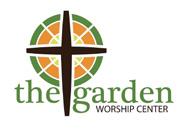
18 TheSharon.com



19 352-751-7799 COMING SOON
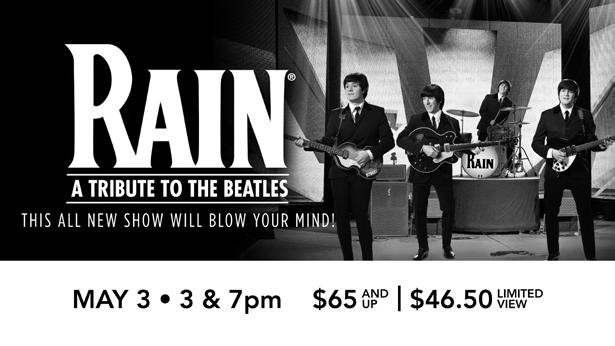


20 TheSharon.com
SOON
COMING
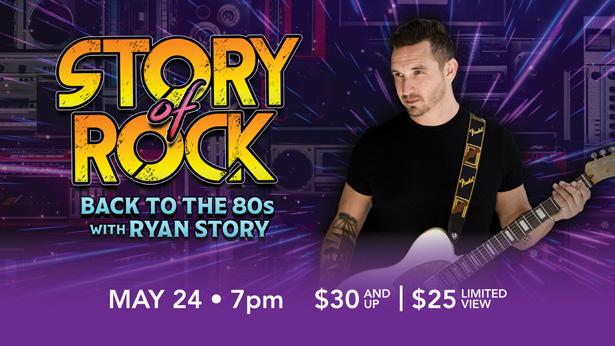

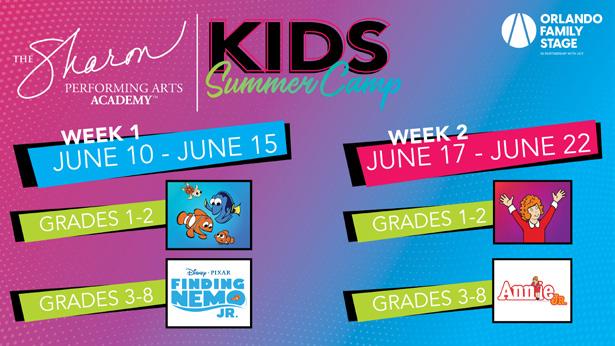
21 352-751-7799 COMING SOON
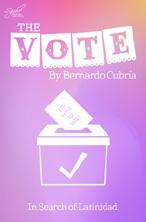



BEHIND THEcurtain tour
Have you ever wondered what happens behind the scenes of your favorite shows at The Sharon? Want to share footprints with some of the world’s biggest stars?
Back by overwhelming demand... The Sharon: Behind the Curtain Tour!


| #TheStudioTheatreTDS 352-751-7799 | 806 San Marino Drive, The Villages, FL 32159
shows produced by SignificantProductions.org Longing to Belong. SEASON 9 SEP 24-OCT 19 NOV 12-DEC 14 JAN 21-MAR 1 APR 1-APR 26 GET YOUR TICKETS & SUBSCRIPTIONS TODAY!
TheSharonStudio.com
All
more information.
Visit SignificantProductions.org/tour for

PRIVATE BOX experience
ENJOY YOUR NEXT SHOW AT THE SHARON LIKE A VIP!


• Private experience for up to 15 guests.
• Private lounge for the evening including home-like furnishings, private facilities, and direct access to the auditorium box for comfortable viewing of your show.
• Upgrades available such as a private bartender or personalized celebratory furnishings.
To explore accommodations and availability, please contact Yasmeen@SignificantProductions.org for a private consultation.
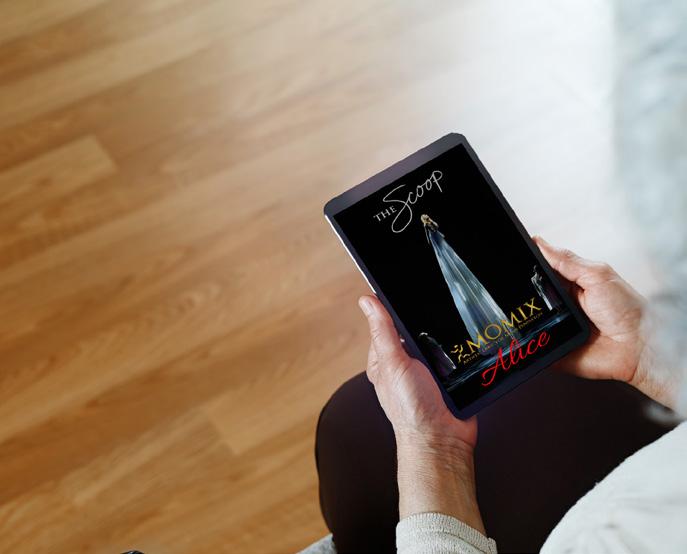
Would you like show information and behind the scenes fun from The Sharon and The Studio Theatres?
Sign up for our free monthly digital newsletter, The Scoop!
Visit www.TheSharon.com and sign up today!

ADVERTISE
with us
Increase your visibility by marketing your message to The Sharon L. Morse Performing Arts Center’s local, engaged audience, as well as advertise in The Studio Theatre Tierra del Sol’s Programs and our monthly Digital Newsletter, The Scoop!
For information on prices, ad sizes, and availability, please email us at marketing@significantproductions.org.
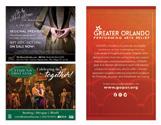







 JAYLENO
JAYLENO







































 JAYLENO
JAYLENO